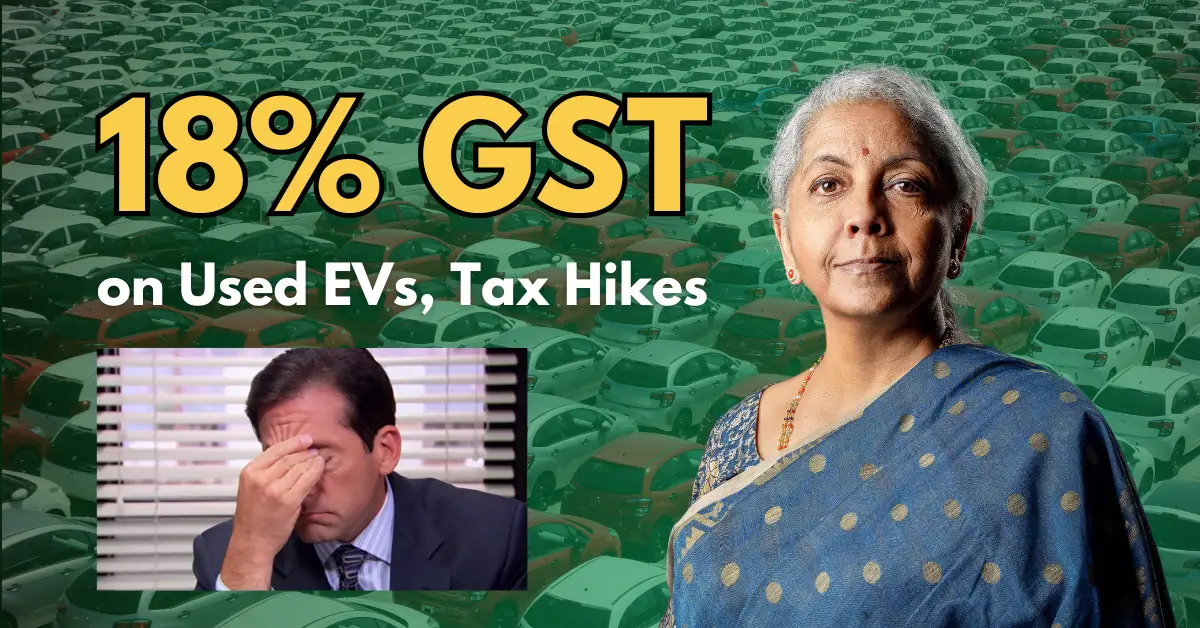
The Indian GST Council, headed by Finance Minister Nirmala Sitharaman, has approved a significant increase in the Goods and Services Tax (GST) on used cars, including electric vehicles (EVs).
The GST rate, previously fixed at 12%, has now been increased to 18%, aimed at bringing stability to the taxation of second-hand vehicles in India.
This change aligns used EVs with petrol, diesel, and CNG vehicles, which already attract 18% GST under specific size and engine parameters.
Taxation Changes for Used EVs and Conventional Cars
The council clarified that the tax applies only to the margin earned by businesses or dealers—the difference between the purchase and selling price, adjusted for depreciation if applicable.
We believe, and many EV experts suggest, that such policies could hinder India’s EV adoption goals and make sustainable transportation less accessible to middle-class families, as well as slow down growth in India.
Private Transactions Remain Exempt
The GST hike exclusively targets business transactions, leaving private sales of used cars exempt from the tax. For instance, if a dealership buys a used EV for ₹9 lakh and resells it for ₹10 lakh, the tax is charged only on the ₹1 lakh profit margin.
Individual sellers and buyers can conduct transactions without any GST liability, ensuring that personal vehicle owners are unaffected.
For example, If you buy a car for Rs 12 lakh and sell it to another individual for Rs 9 lakh, no GST applies.
This exemption provides relief for private sellers, keeping the focus of the tax change strictly on businesses operating for profit in the resale market.
Potential Impact on the Second-Hand EV Market
The increased GST on resold EVs may create challenges in the pre-owned market, potentially reducing the appeal of used EVs compared to new ones.
With operational costs for dealers rising, the affordability of second-hand vehicles could decline, impacting the market’s growth.
Critics argue that such policies could hinder India’s EV adoption goals and make sustainable transportation less accessible for middle-class families.
Uniformity and Taxation Goals
By aligning the GST rate across all second-hand vehicles, the council aims to eliminate discrepancies in the taxation framework.
Vehicles previously taxed based on engine size, length, or fuel type now fall under the uniform 18% rate, simplifying the system. While this adjustment may bring consistency, concerns remain about its broader implications for the second-hand market and its alignment with sustainability efforts.
Final Thoughts
The GST Council’s decision to raise the tax rate for used cars reflects an effort to standardize taxation, but it also underscores the need for balance.
While private sellers remain unaffected, businesses in the second-hand market may face challenges in maintaining affordability for consumers.
A careful approach is essential to ensure that taxation policies support uniformity without discouraging EV adoption or burdening middle-class families.